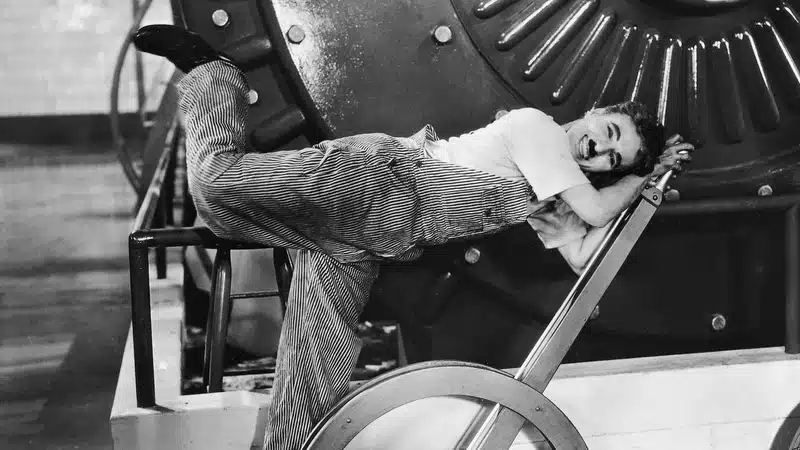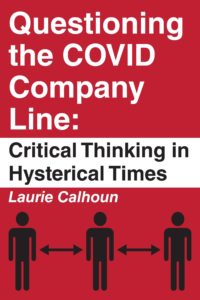Unbelievably, in 2025, walking among us are people, many of them young and college-educated, who believe the Industrial Revolution (spawned by the liberal Enlightenment) was a disaster for most of mankind. They yearn for what they imagine was the tranquil, plentiful, and happy communalism of the Middle Ages. I’m not referring only to people on the fringes. Glenn Greenwald, the cosmopolitan journalist who has done important reporting on civil liberties and foreign policy, recently lamented the loss of medieval life in a paean to the anti-industrial manifesto (but not the murderous actions) of Ted Kaczinski. He was the Unabomber.
What’s shocking is that the data showing what a blessing industrial capitalism has been are readily available. It’s a big literature, and it may seem difficult to know where to start. So thanks (again) to Phil Gramm and Donald Boudreaux for presenting the facts in a succinct but detailed chapter in their important book, The Triumph of Economic Liberty: Debunking the Seven Great Myths of American Capitalism. The first chapter is “The Genesis Myth: The Industrial Revolution Impoverished Workers.”
No, it did not, the authors demonstrate. It enriched them.
The propagators of the myth begin with a distorted picture of what preceded the Industrial Revolution. As Gramm and Boudreau correct the record:
In the communal world of the Middle Ages, the worker owed fealty to the crown, church, guild, and village. Those “stakeholders,” as they would be called today, extracted large shares of the output produced by the sweat of workers’ brows and the fruits of their thrift. Rewards for effort and saving were thus leeched away. Unsurprisingly, the economic output was so sparse and economic growth so slow that they were noticeable only across the span of centuries.
Life was not solitary (privacy was nonexistent), but it was certainly poor, nasty, brutish, and short, wracked with violence, disease. Serfdom, anyone? Who could lament the end of that era? Fortunately, it did end. Had it not ended, hardly anyone alive today would have been born, much less be flourishing. Gramm and Boudreaux write:
This dreary reality suddenly (in historical terms) changed in the seventeenth and eighteenth centuries. Starting in northwestern Europe, the Enlightenment of the era gave birth to liberalism, which—true to its name—liberated mind, soul, and property. Individuals were freed and empowered to think their own thoughts and, ultimately, have a voice in their government. Men and women secured the right to worship as they chose, as well as to own the fruits of their labor, thrift, risk-taking, and entrepreneurial creativity.
Even Karl Marx, the infamous resentful nihilist, had to acknowledge capitalism’s astounding record of production for the masses. Before the liberal, capitalist industrial era, mass production was not even a figment of the imagination.
In this newly enlightened and liberated world, individuals were empowered to pursue their own private interests instead of being conscripted by law or tradition into assisting the elite in pursuing their private interests. The economist W. H. Hutt described the change succinctly: “One of the main social results of the factory regime seems to have been the evolution of the idea of a wage contract, replacing the former idea of servitude.”
To some people, that was barely progress. Noam Chomsky thinks that chattel slavery is only slightly worse than wage employment. He rejects the proposition that “renting” someone is much different from buying him. Contract labor, chattel slavery: it’s pretty much the same. The wage earners would have disagreed.
Gramm and Boudreaux explain that endless Victorian poetic and fictional depictions of how bad life was in the industrial cities were in fact a sign of capitalism’s progress in enriching the masses. When everyone but the nobility was poor, no one noticed it; that’s just how things were. But once life began to improve, thanks to capitalism and industry, those who did not experience progress as quickly as others stood out. The authors quote F. A. Hayek: “Economic suffering both became more conspicuous and seemed less justified, because general wealth was increasing faster than ever before.”
“Remarkably,” Gramm and Boudreaux write, “these historical and romantic critiques were written about a period that, by every available economic measure, was the beginning of a golden age of material well-being—especially for workers.” The claim of impoverishment, they add,
is refuted by every major measure of material well-being. In a single century, from 1800 to 1900, wages, life span, and literacy expanded at rates never before experienced. The Industrial Revolution, beginning in Britain and then spreading to continental Europe, the United States, and eventually, most of the globe, ushered in a golden age for workers that continues to this day.
When they say every “major measure,” they mean not only material wealth, but infant and child mortality, survival in childbirth, literacy, nutrition, and much more. The graph makes a hockey stick: no progress for thousands of years, and then around 1800—Zoom!—all signs of progress skyrocket.
As Gramm and Boudreaux suggest, it is absurd to judge those early years of growth by today’s standards. Poverty is the natural state. Wealth is artificial (manmade). The proper comparison, then, is with what went before the industrial era, feudalism and mercantilism. Once human freedom and ingenuity were liberated, progress took time. Even so, set against all of human history, progress was swift. And recall that this was the beginning of mass production, which must precede mass consumption.
Gramm and Boudreaux turn to the economic historian Deirdre McCloskey for more evidence. I’ve been reading McCloskey’s eye-opening work (Bourgeois Virtues, Bourgeois Dignity, and Bourgeois Equality; also, with Art Carden, Leave Me Alone and I’ll Make You Rich). I can attest to its power. McCloskey, write Gramm and Boudreaux,
estimates that since the Industrial Revolution—what she calls the “Great Enrichment”—began just over two hundred years ago, living standards in countries such as Britain, the United States, Japan, and Finland have risen by at least 3,000 percent and perhaps—if improvements in product quality are more fully taken into account—by as much as 10,000 percent!”
Let that sink in. Per capita wealth has increased 3,000 to 10,000 percent since 1800.
You need more evidence? Citing economic historian Gregory Clark, Gramm and Boudreaux write,
At the dawn of the nineteenth century, real wages were no higher than they had been at the dawn of the thirteenth…. [A] revolution in economic production accelerated around the start of the 1800s, and the quality of life in Britain underwent more rapid improvement than had ever occurred in recorded human history. Wages that had largely stagnated for thirty generations began to rise rapidly…. During the Victorian era, from 1840 to 1900, the real wages of skilled builder craftsmen increased by 113 percent, and the real wages of unskilled builder helpers rose by 124 percent.
Explain that one, you lovers of the Middle Ages. Or this: compared to life as a “downstairs” servant on an aristocrat’s estate, “The factories,” write Gramm and Boudreaux, “offered higher pay, shorter hours, better working conditions, and even more fresh air.”
Okay, but what about child labor? That will always come up. Gramm and Boudreaux quote economic historians Carolyn Tuttle and Simone Wegge: “Child labor did not begin during the Industrial Revolution of Great Britain but had existed for centuries across Europe.” Remember, it took time and ingenuity for per-worker productivity to increase to where an adult could support a family. That wasn’t the fault of capitalism. Little boys were chimney sweeps before the industrial era. At any rate, Gramm and Boudreaux say that “most young working children did not toil in factories or mines. Agriculture, services, trades, and clerical duties together employed far more children than did factories and mines….
“Furthermore, the economist Clark Nardinelli of the University of Virginia found that the employment of children in factories was declining before the Factory Acts were passed…. The Factory Acts codified the market process that was already underway. In closing the ugly ten-millennial chapter of child labor by the end of 1900, the Industrial Revolution had ushered in a new chapter of more intense childhood nurturing and learning.”
What did the workers think about industrialization? Gramm and Boudreaux note that historian Emma Griffin, who read 350 writings of regular workers, reported, “It is time to think the unthinkable: that these writers viewed themselves not as downtrodden losers, but as men and women in control of their destiny; that the industrial revolution heralded the advent not of a yet ‘darker period’, but of the dawn of liberty….”
Gramm and Boudreaux sum up: “The best evidence, which can be found both in statistics and in the written testimony of workers who lived during the Industrial Revolution, strongly suggests that the initial spark of the lavish material prosperity that we enjoy today was not struck at the expense of the first few generations of workers who toiled in Britain’s water- and steam-powered factories. They, too, benefited, as the Great Enrichment made even those workers and their families richer, freer, and happier.”
The same is true for America. In the second half of the 1800s, Americans “experienced unprecedented and broad-based economic growth. Between 1865 and 1900, inflation-adjusted GDP nearly tripled, expanding by an extraordinary 297 percent. Nothing
like this had ever happened in American history.”
Thus, “The Gilded Age, in short, was an era of unparalleled improvement in living standards for almost all Americans.”
Read this book.































